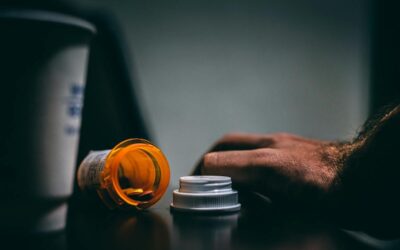Table Of Contents:
- Understanding Half Day IOP Programs in Massachusetts
- Overcoming Common Challenges in Half Day IOP Programs
- Strategies for Effective Participation in IOP Programs
- Evaluating Program Effectiveness for Participants and Families
- Resources for Individuals Engaging With Half Day IOPs
- Future Trends in Half Day IOP Treatments in Massachusetts
- Frequently Asked Questions
Understanding Half Day IOP in Massachusetts
Define the Core Components of Half Day IOP Structures
Half Day Intensive Outpatient Programs (IOPs) in Massachusetts offer a blend of group and individual therapies conducted over four to six hours per session. These programs include psychoeducation, skills training, group therapy, individual counseling, mindfulness practices, and family therapy components. In addition, relapse prevention planning and aftercare are key elements that allow patients to continue their recovery journey after each session. The structure is flexible and personalized to meet the needs of a diverse population—from working professionals and students to parents. Clinical staff use evidence‐based practices to tailor treatment plans, ensuring that each patient benefits from goal setting and ongoing progress assessments to track their development and adjust interventions as necessary. The collaborative environment encourages peer support and fosters a sense of community among participants, enhancing the overall therapeutic experience. By integrating holistic approaches and leveraging the expertise of multidisciplinary teams, these Half Day IOPs in Massachusetts strive to empower individuals to cultivate resilience, coping skills, and sustainable recovery strategies that promote long-term wellness and a renewed sense of purpose in their lives.
Identify the Target Audience for IOP Programs
Half Day IOPs target individuals who need structured yet flexible care, including:
• Patients with substance use disorders and co-occurring mental health issues.
• Those transitioning from higher levels of care who require intensive outpatient support.
• Individuals who must balance recovery with responsibilities at work, school, or home.
• Family members who play an integral role in supporting the patient’s recovery process.
This tailoring ensures that treatment is accessible for working professionals, parents and caregivers, students, individuals with dual diagnoses, and those moving from inpatient to outpatient settings.
Discuss the Benefits of Half Day Treatment Models
Key advantages of half day IOP models include:
• Accessibility and Flexibility: Patients receive intensive care without interrupting daily routines.
• Cost-Effectiveness: These programs reduce treatment costs compared to full-day or residential models.
• Reduced Stigma: Because patients are not isolated in a residential setting, they often face less societal stigma.
• Immediate Skill Application: Learned coping strategies can immediately be applied in everyday interactions.
• Personalization and Aftercare: Personalized planning enhance long-term recovery. Studies have shown improvements in mood stability and • Personalization and Aftercare: Personalized planning enhance long-term recovery. Studies have shown improvements in mood stability and overall well-being when individuals receive tailored aftercare support that addresses their specific needs and challenges. This personalized approach not only promotes sustained recovery but also fosters a sense of empowerment and self-efficacy in individuals as they navigate their journey towards lasting health and wellness.
Examine the Difference Between IOP and Other Treatment Types
Half day IOPs differ from other treatment modalities as follows:
• Schedule and Environment: Unlike residential care or full-day partial hospitalization, IOPs allow patients to return home each day.
• Cost and Disruption: They are generally more affordable and less disruptive to daily life.
• Intensity of Support: IOPs provide targeted, intensive interventions along with ongoing aftercare, blending the best aspects of outpatient care with structured therapy.
This balance makes them an excellent option for individuals looking to maintain employment, education, or familial commitments while receiving treatment.
Highlight the Typical Duration and Schedule of Sessions
A typical half day IOP session in Massachusetts lasts four to six hours and is usually scheduled multiple times a week. A sample daily schedule includes: 1. Morning Check-In (30 minutes): Patients share their emotional state and set intentions. 2. Group Therapy (60–90 minutes): Facilitates peer support and collaborative problem solving. 3. Educational Workshop (45–60 minutes): Covers topics like stress management and relapse prevention. 4. Break (15–30 minutes): Provides a short period for refreshments and informal interactions. 5. Individual/Family Counseling (45–60 minutes): Focuses on personal challenges and tailored therapy. 6. Mindfulness and Reflection (30 minutes): Uses guided meditation to consolidate session gains. 7. Wrap-up (15–30 minutes): Reviews key points and sets goals for the next session. This structured approach ensures
.
, accountability, and practical application of recovery skills.
Review State Regulations Guiding IOP Implementations
IOP programs in Massachusetts operate under strict state regulations designed to ensure high standards of care and patient safety. Regulations cover:
• Staffing Standards: Mandate appropriate clinician-to-patient ratios and proper licensing.
• Treatment Protocols: Require evidence-based and individualized treatment planning.
• Documentation and Confidentiality: Ensure accurate records and adherence to HIPAA.
• Accessibility and Aftercare: Guarantee transportation support and integration of aftercare planning.
• Regular Audits: Continuous evaluations and inspections maintain transparency and quality. These measures ensure that IOPs deliver safe, effective, and reliable addiction treatment while continuously adapting to best practices.
Overcoming Common Challenges in Half Day IOP Programs

Address Potential Scheduling Conflicts for Participants
Scheduling conflicts, often due to work or family commitments, can hinder treatment continuity. To address this:
• Multiple Session Options: Clinics offer sessions at various times during the week.
• Digital Scheduling Tools: Automated reminders help reduce missed appointments.
• Employer/Educator Support: Coordination with workplaces or schools to secure needed time off.
• Dedicated Case Management: Case managers assist in integrating treatment into daily routines. Such strategies reduce missed sessions and promote consistent engagement in the program.
Discuss How to Manage Coordination With Family Obligations
Balancing treatment with family responsibilities is vital. Effective strategies include:
• Family Therapy Sessions: Help family members understand the recovery process.
• Coordinated Child Care: Assistance with childcare during sessions.
• Clear Communication Channels: Regular updates from clinicians about treatment progress.
• Flexible Scheduling: Adjust session times to accommodate family needs. Successful coordination not only eases the patient’s burden but also strengthens the overall support system essential for recovery.
Identify Ways to Keep Participants Engaged and Motivated
Maintaining engagement can enhance treatment outcomes. Techniques include:
• Interactive Group Discussions: Encourage sharing of experiences and ideas.
• Goal-Setting Workshops: Help patients set and track personalized recovery milestones.
• Use of Technology: Smartphone apps can monitor progress and send motivational alerts.
• Recognition Programs: Celebrating achievements in group settings reinforces commitment. These methods collectively boost motivation and improve adherence to the recovery process.
Explore Overcoming Clinical Staff Shortages
Staff shortages may impede the ability to provide personalized care. To overcome this, programs may:
• Utilize Telehealth Services: Extend the reach of existing clinical staff.
• Hire Part-Time Specialists: Engage temporary experts during peak demand periods.
• Leverage Peer Support: Recovered individuals can provide valuable supplementary support.
• Streamline Administrative Processes: Automation allows clinicians to focus more on patient care. Collaborative partnerships with training institutions can further help in ensuring that patients consistently receive high-quality care.
Analyze Funding Accessibility and Insurance Challenges
Funding and insurance issues can limit access to treatment. Effective strategies include:
• Streamlining Verification Processes: Faster insurance approvals improve access.
• Negotiating Bulk Discounts: Reduced rates help lower patients’ out-of-pocket expenses.
• Offering Sliding-Scale Payments: Payment plans tailored to income levels reduce financial barriers.
• Providing Financial Counseling: Dedicated staff help patients navigate insurance complexities and access
Such approaches build trust and ensure that financial challenges do not disrupt the treatment process.
Strategies for Effective Participation in IOP Programs
Encourage Setting Personalized Goals for Success
Personalized goal setting is essential for motivation and successful treatment. Patients benefit when they:
• Participate in dedicated goal-setting workshops.
• Engage in regular review meetings with clinicians.
• Develop individualized action plans. • Use visual progress trackers like charts or apps.
• Receive recognition for achieving milestones.
Involving family members in this process further strengthens commitment, leading to higher treatment adherence and better outcomes.
Promote the Development of a Supportive Network
A strong support network is critical for recovery. Effective strategies include:
• Regular Group Therapy: Structured sessions enable peer support and shared learning.
• Family Counseling: Involving family members creates a multi-layered support system.
• Peer Mentorship: Pairing new patients with experienced peers facilitates guidance.
• Online Support Communities: Virtual meetings and forums ensure continuous engagement. These networks reduce feelings of isolation and provide the encouragement needed to overcome challenges along the recovery journey.
Advocate for Open Communication With Therapists
Transparent communication between patients and therapists improves treatment outcomes. Strategies include:
• Scheduling one-on-one sessions to discuss personal challenges.
• Implementing anonymous feedback systems.
• Establishing clear communication guidelines.
• Holding regular progress check-ins to adjust treatment plans as needed.
This open dialogue fosters trust and allows clinicians to promptly address any emerging issues, ensuring that therapy remains effective and personalized.
Suggest Methods for Maintaining Accountability
Accountability is key to sustaining recovery. Methods used include:
• Utilizing daily progress log apps and regular progress reports.
• Setting and monitoring clear milestones.
• Partnering patients with peer accountability partners.
• Involving family members in the tracking process.
• Regular therapist check-ins and public acknowledgment during group sessions. These practices help keep patients focused on their recovery goals, reducing the likelihood of relapse.
Explain the Importance of Aftercare Planning
Aftercare planning is crucial for long-term recovery. An effective aftercare plan includes:
• Scheduled Follow-Up Therapy Sessions: Continued support after intensive treatment.
• Community Support Groups: Ongoing participation in local or online meetings.
• Personal Relapse Prevention Plans: Written strategies that address potential triggers.
• Family Education: Involving loved ones to foster a supportive home environment. By bridging the gap between structured treatment and everyday life, aftercare planning helps sustain the progress made during treatment and protects against relapse.
Recommend Attending Supplementary Workshops or Groups
Supplementary workshops enhance the core treatment by covering topics such as:
• Mindfulness Meditation and Stress Management: Deepening the skills learned during therapy.
• Nutrition for Recovery and Vocational Training: Supporting overall well-being and future stability.
• Creative Therapies: Art and music provide emotional outlets. These workshops offer additional learning opportunities and reinforce the supportive network essential for lasting recovery.
Evaluating Program Effectiveness for Participants and Families
Clarify the Key Indicators of Program Success
Program success is measured by several key indicators, including:
• Reduction in Relapse Rates: Lower frequency of substance use.
• Improved Mood and Emotional Stability: Better ability to manage stress and emotions.
• Increased Treatment Adherence: Consistent attendance at sessions.
• Positive Family Feedback: Improved communication and healthier home dynamics.
• Enhanced Daily Functioning and Peer Engagement: Better performance at work or school and more active participation in support networks. Regular assessments using standardized tools help clinicians ensure that each patient’s progress is monitored and that adjustments can be made as needed.
Discuss How to Measure Personal Progress in Treatment
Measuring personal progress involves:
• Using standardized assessments, such as psychological evaluations and stress measurement scales.
• Maintaining progress diaries to record daily challenges and successes.
• Collecting feedback through session forms and one-on-one evaluations.
• Incorporating technology, such as mobile apps, to track physiological and mental health indicators. Together, these offer a comprehensive picture of each patient’s recovery, ensuring that both subjective and objective improvements are recognized.
Review Feedback Mechanisms for Families and Participants
Effective feedback mechanisms include:
• Standardized Satisfaction Surveys: To gauge overall satisfaction.
• Focus Group Discussions and Individual Interviews: Offering deeper insights into personal experiences.
• Digital Feedback Platforms: Allowing continuous submission of suggestions.
• Family Counseling Sessions: Collecting feedback from family members. These channels help treatment centers refine their programs and ensure that both patients and families are heard, which in turn supports continuous improvement in care.
Explore the Role of Aftercare in Sustained Recovery
Aftercare is essential to preventing relapse. Key components include:
• Regular Follow-Up Sessions: To reinforce learned strategies.
• Access to Community Support Groups: To maintain a sense of belonging.
• Personalized Relapse Prevention Plans: Specific strategies for managing triggers.
• Family Education and Support: Strengthening the at-home support system. By planning for aftercare during the therapy and counseling, treatment centers ensure that patients have a seamless transition to independent recovery.
Highlight Potential Adjustments Based on Evaluations
Continuous evaluations help identify necessary adjustments, such as:
• Revising session contents based on patient feedback.
• Optimizing session timing for better fit with patients’ schedules.
• Incorporating new therapeutic techniques, such as mindfulness meditation.
• Enhancing digital tools for progress tracking and communication.
These data-driven adjustments ensure the IOP program remains effective and responsive to patients’ evolving needs.
Resources for Individuals Engaging With Half Day IOPs
Identify Support Groups for Families and Participants
Support groups available include:
• SMART Recovery Meetings: Focus on self-empowerment and behavior change.
• Al-Anon Family Groups: Offer support for family members affected by addiction.
• AA and NA Meetings: Provide widely available peer support.
• Dual Recovery Anonymous: Support for those with co-occurring disorders.
• Online Recovery Forums: Virtual platforms for continuous support.
Share Contact Information for Mental Health Hotlines
Essential hotlines in Massachusetts:
• Massachusetts Behavioral Health Hotline: 1-800-123-4567
• National Suicide Prevention Lifeline: 988 or 1-800-273-8255
• Crisis Text Line: Text HOME to 741741
• Substance Abuse Helpline: 1-800-662-HELP (4357)
• Family Support Hotline: 1-800-321-6543
• Veterans Crisis Line: 1-800-273-8255, Press 1
Recommend Books and Materials Related to Recovery
Key resources include:
• The Recovery Book by Al J. Mooney Jr. and Catherine Dold
• Clean: Overcoming Addiction and Ending America’s Greatest Tragedy by David Sheff
• Beyond Addiction: How Science and Kindness Help People Change by Jeffrey Foote et al.
• In the Realm of Hungry Ghosts by Gabor Maté
• Recovery 2.0 by Russ Kunkel and Brady Corbet
• The Big Book of Alcoholics Anonymous
• SMART Recovery: Self-Help Program for Addictions Key benefits
Future Trends in Half Day IOP Treatments in Massachusetts
Discuss the Impact of Telehealth on IOP Services
Telehealth is transforming IOP services by enabling virtual counseling, digital progress tracking, and remote peer support. Benefits include increased accessibility, flexible scheduling, enhanced privacy, cost efficiency, real-time monitoring, rapid communication, and easy integration with other digital tools. This trend is expected to further enhance treatment continuity and patient engagement.
Speculataing on Innovative Treatment Techniques Emerging
Emerging treatment techniques include:
• Neurofeedback Therapy: Real-time brain activity monitoring to aid self-regulation.
• Virtual Reality Exposure Therapy: Using VR to safely expose patients to triggers.
• Mindfulness-Based Stress Reduction (MBSR): Structured meditation to manage stress.
• Biofeedback: Teaching stress control through physiological monitoring.
• Integrative Nutritional Approaches: Dietary modifications to support overall health.
• Art and Music Therapy: Creative therapies to foster emotional expression.
• Mobile App-Based CBT Modules: Enhancing cognitive-behavioral techniques via smartphone apps. These innovations are gradually being incorporated into traditional IOP models to improve treatment outcomes.
Explore Shifts in Public Perception and Stigma
Public awareness of addiction as a disease has grown, helping to reduce stigma. Efforts to educate the community, share success stories, reform policies, and promote inclusive treatment models are changing public perceptions. As stigma diminishes, more individuals are likely to seek help, contributing to better overall health outcomes.
Analyzing Potential Changes in Funding and Policy
Recent changes in healthcare policy promise to improve funding and accessibility for IOP programs. Expected shifts include expanded Medicaid coverage, increased insurance reimbursements, state-funded pilot programs, performance‐based funding models, and reforms that reduce patient co-pays. These changes aim to alleviate financial barriers and ensure that high-quality, evidence-based treatment remains accessible to all who need it.
Predicting the Integration of Holistic Approaches in IOPs in MA
Holistic treatment methods are becoming an integral part of IOPs. Approaches such as yoga, acupuncture, nutritional counseling, art and music therapy, and integrative wellness workshops complement traditional therapies. This integration aims to address the physical, emotional, and spiritual aspects of addiction, offering patients a comprehensive, patient-centered path to recovery.
Summarize the Role of Technology in Treatment Delivery
Technology is increasingly vital in the delivery of IOP services. Telehealth, mobile apps, digital scheduling tools, secure online portals, data analytics, and virtual support groups all contribute to a more efficient and accessible treatment process. These technological tools empower patients by providing real-time feedback and allowing clinicians to make data-driven decisions, further enhancing treatment quality and engagement.
Frequently Asked Questions
Q: What makes half day IOP programs different from full day or residential treatments? A: Half day IOPs provide intensive treatment during the day while allowing patients to return home, which minimizes disruption to work, school, and family life. This flexible model reduces treatment costs and stigma while offering structured support through both therapy sessions and aftercare planning. For more details, you can read about half day IOP programs.
Q: How do scheduling conflicts affect treatment outcomes in IOP programs? A: Conflicts can lead to missed sessions and decreased treatment continuity. To counter this, programs offer multiple session times, digital reminders, flexible rescheduling, and coordination with employers or educators, all of which help patients remain engaged and consistent in their recovery.
Q: Can technology like telehealth truly enhance the effectiveness of IOP services? A: Yes, telehealth expands access to therapy, enables virtual sessions and progress tracking, and facilitates immediate communication between patients and clinicians. This increased accessibility and convenience often lead to better treatment adherence and overall outcomes.
Q: How are personalized goals set in half day IOP programs, and why are they important? A: Goals are set collaboratively between patients and clinicians through workshops and regular reviews. These personalized goals provide clear, measurable milestones that boost motivation and treatment adherence while helping patients track their progress.
Q: What role do support networks play in the success of half day IOP programs? A: Support networks, which include peers, family members, and community groups, offer essential emotional and practical support. They help reduce isolation, provide accountability, and reinforce the skills learned during therapy, all of which are critical for long-term recovery. half day IOP
Q: How do funding and insurance challenges impact access to IOP programs? A: Financial barriers, such as limited insurance coverage or high co-pays, can delay or restrict access to treatment. Many programs work with insurers, offer sliding-scale payments, and provide financial counseling to ensure that treatment remains accessible. For more information, visit locations.
Q: What steps can be taken to prevent relapse once the half day IOP concludes? A: A structured aftercare plan is vital. This includes follow-up therapy, participation in peer support groups, family counseling, and the development of personalized relapse prevention strategies that help patients manage triggers and maintain their recovery over the long term. half day IOP



